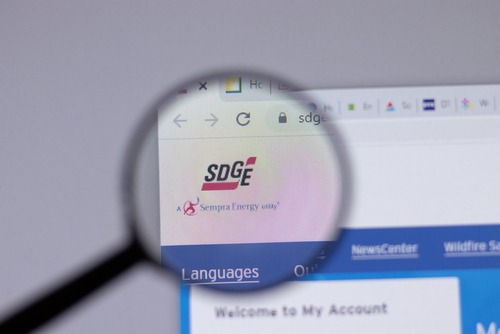SDG&E to develop hydrogen pilots, battery storage to aid net zero greenhouse gas emission pledge

As part of a sustainability pledge to reach net zero greenhouse gas emissions by 2045, San Diego Gas & Electric (SDG&E) announced this week that it is creating two hydrogen pilot projects, adding battery storage facilities, and creating a new vehicle-to-grid pilot program.
The existing pledge from SDG&E is meant to cover all emissions types and eliminate both the company’s emissions and those generated by its customers. Such moves bring new jobs and add items like six electric school buses to the region.
“Getting to a net zero future is the moonshot challenge of our era and one that the SDG&E team fully embraces,” Caroline Winn, SDG&E CEO, said. “SDG&E has worked hard to align our investments with the climate objectives of local cities, the region, and state, and while there is a lot more work to be done, we are seeing many clean energy innovations emerge and progress being made toward our mutual goal of a 100% clean energy future. While we’ll continue to evolve our efforts to reflect stakeholder feedback, regulatory changes, and technological breakthroughs, I believe we can get there…one project at a time.”
The most ambitious of these projects are the hydrogen demonstration projects, which test six use cases and see service as early as next year. These include the Borrego Springs Green Hydrogen Project and the Palomar Green Hydrogen Systems Project. While Borrego will use hydrogen as long-duration energy storage, a microgrid asset, and a resource for grid reliability with the California Independent System Operator (CAISO), Palomar will focus on blending hydrogen with natural gas as fuel for an electric generation and onsite production of hydrogen for use as a cooling gas.
Currently, SDG&E owns and operates 13 energy storage projects, which provide approximately 45 MW of storage. Going forward, it intends to reach 135 MW of integrated storage through the addition of three more facilities, all by early 2022.
As the electric vehicle charging network expands, SDG&E will also simultaneously push novel vehicle-to-grid technology through a pilot of bi-directional DC fast chargers at the Cajon Valley Union School District. Another 140 chargers are planned for 22 parks and beaches in the region. Fleet assistance is also a major focus, and just last month, SDG&E energized its first EV chargers meant for a medium and heavy-duty EV infrastructure program. When finished, this should amount to 300 sites, capable of serving at least 3,000 vehicles.
